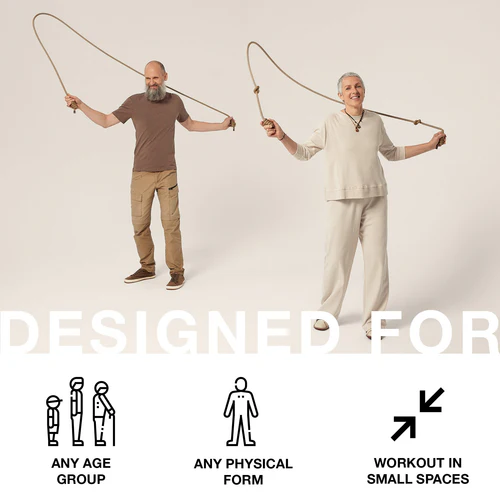The world of sports has always been about finding that extra edge — the split second that separates a win from a loss. In the past, coaches relied on instinct, experience, and observation to guide athletes toward success. But in today’s data-driven era, guesswork is no longer enough. The rise of athlete performance tracking software has changed the game completely, offering precise, data-backed insights that turn athletic potential into measurable performance.
For modern coaches, trainers, and athletic programs, this technology is not just a convenience — it’s a necessity. From professional leagues to high school sports, performance tracking has become a key component in how athletes train, recover, and evolve.
Understanding Athlete Performance Tracking Software
At its core, athlete performance tracking software is a data analytics platform built specifically for sports. It gathers, processes, and visualizes information about an athlete’s physical performance, training efficiency, and game-day output.
These systems collect various data points such as:
- Speed and acceleration
- Distance covered
- Heart rate and oxygen levels
- Jump height and explosiveness
- Workload intensity
- Fatigue and recovery rate
- Injury risk indicators
By transforming this data into clear visual dashboards and metrics, coaches and players can make informed adjustments to training sessions and game strategies.
Platforms like iQSports take it further — integrating real-time analytics, video footage, and roster management into one cohesive system. That means coaches don’t just see what happened — they understand why it happened and how to improve it.
According to Wikipedia’s performance analysis in sport overview, these analytical methods are essential for identifying trends, weaknesses, and opportunities for improvement — helping teams turn information into action.
From Data to Decisions: How It Works
Athlete performance tracking software uses a combination of wearable devices, GPS trackers, and AI-powered analytics to collect and interpret data. Once gathered, the data flows through several key stages:
1. Data Collection
Athletes wear sensors or smart devices that monitor physiological and biomechanical metrics. This can include GPS units, chest straps, or motion trackers placed in clothing or shoes.
2. Data Processing
The collected data is uploaded to a cloud-based platform where the software cleans, organizes, and categorizes the information. Noise is filtered out, ensuring accuracy.
3. Data Analysis
AI algorithms analyze the data to highlight meaningful patterns. For example, if an athlete’s sprint speed declines over consecutive sessions, the system can flag potential fatigue or overtraining.
4. Visualization and Insights
Coaches access interactive dashboards, charts, and heatmaps that visually display player metrics. This makes complex data easy to understand at a glance.
5. Actionable Coaching
With insights in hand, coaches can personalize training, modify intensity, or rest players strategically to optimize both short-term performance and long-term health.
This process — measure, analyze, and act — is the foundation of modern performance management in sports. What used to take hours of video review now happens in seconds with software like iQSports.
Why Coaches Need Athlete Performance Tracking Software
In today’s hypercompetitive sports environment, every second, step, and stat matters. Here’s why coaches across the United States are rapidly adopting athlete performance tracking software as part of their daily workflow.
1. Objective Evaluation Over Subjective Judgment
Traditional coaching relies heavily on visual assessment — which can be influenced by bias, emotion, or incomplete observation. With performance tracking, every rep, sprint, or lift is quantifiable. Coaches can objectively measure improvement or regression and tailor training accordingly.
2. Smarter, Personalized Training Plans
No two athletes are alike. Using athlete tracking tools, coaches can create customized plans based on individual data. For example, if one player’s acceleration curve lags, the coach can implement specific drills to build explosive starts.
3. Real-Time Feedback
During games or practice sessions, real-time analytics allow instant decision-making. If data shows an athlete’s workload is spiking too quickly, the coach can intervene before fatigue leads to injury.
4. Early Injury Detection and Prevention
Overtraining is one of the leading causes of sports injuries. By monitoring workload balance, rest patterns, and muscle recovery, athlete performance tracking software helps coaches identify risks before they become problems.
As outlined by the Centers for Disease Control and Prevention (CDC), proactive injury prevention through data monitoring plays a major role in improving athlete safety and long-term health.
5. Enhanced Motivation and Accountability
Seeing personal progress in hard numbers motivates athletes to stay engaged and push boundaries. Tracking tools encourage self-awareness and accountability, allowing players to take ownership of their performance goals.
6. Team-Wide Strategy Optimization
Beyond individual athletes, coaches can use aggregated team data to design better strategies. By comparing workload metrics and positional efficiency, they can make smarter lineup decisions, substitutions, and tactical calls.
How iQSports Is Powering the Future of High School Athletics
iQSports is leading the charge in the democratization of athlete performance tracking software. What was once available only to professional teams is now accessible to high schools and community sports programs nationwide.
Their platform integrates multiple systems — including real-time video analytics, data visualization, and roster management — giving coaches and athletes a complete view of their performance landscape.
Unlike one-size-fits-all tools, iQSports is built for the needs of high school coaches, offering intuitive dashboards, flexible data entry, and mobile-friendly interfaces. The result is a smarter, more connected approach to player development — one that enhances teamwork, safety, and competitive spirit.
The Technology Behind Performance Tracking
Modern tracking systems blend multiple technologies to create accurate, dynamic reports:
- GPS and RFID Sensors: Track player positioning, speed, and distance covered.
- Inertial Measurement Units (IMUs): Measure acceleration, jump height, and impact forces.
- Heart Rate Monitors: Provide insights into cardiovascular endurance and recovery.
- Computer Vision and AI: Analyze movement patterns from video footage.
- Cloud Computing: Enables data storage, processing, and real-time access from anywhere.
These components work together seamlessly, giving coaches a complete picture of every athlete’s journey — from preseason training to championship performance.
Real-World Impact: Case Studies and Scenarios
1. High School Football Programs
A Mississippi high school partnered with iQSports to monitor workload and fatigue levels across its varsity roster. Within one season, the coaching staff reported:
- A 22% reduction in soft-tissue injuries
- A 15% improvement in sprint acceleration
- More efficient practice schedules with less player burnout
2. Track and Field Training
Using athlete performance tracking tools, track coaches can assess stride frequency, contact time, and heart rate variability. This data helps fine-tune sprint mechanics and recovery intervals, leading to measurable performance gains.
3. Basketball Conditioning
In basketball, repetitive jumping and lateral movement can lead to fatigue and injury. Tracking software monitors jump load and agility drills, allowing coaches to balance intensity and rest more effectively.
Building a Data-Driven Coaching Culture
The technology is only as powerful as the culture behind it. Successful adoption of athlete performance tracking software requires buy-in from both coaches and players.
Educate and Empower
Coaches should explain the purpose behind tracking — that it’s a tool for growth, not surveillance. When athletes understand the “why,” they’re more likely to embrace the process.
Collaborate on Goals
Performance data should spark collaboration. Coaches and players can set shared targets based on real numbers, fostering trust and communication.
Balance Data and Intuition
Numbers guide decisions, but experience still matters. The best programs blend data-driven insights with human judgment for well-rounded athlete development.
AI and Predictive Analytics: The Next Frontier
Artificial Intelligence (AI) is reshaping how athlete performance tracking software functions. Today’s platforms can:
- Predict fatigue levels based on past workloads.
- Suggest rest or recovery sessions automatically.
- Detect anomalies that indicate potential injuries.
- Personalize training recommendations for each athlete.
As machine learning algorithms evolve, systems like iQSports are expected to offer predictive coaching — where data doesn’t just describe performance, it forecasts it.
Imagine a system that alerts a coach before a hamstring strain occurs, or recommends a change in drills to prevent fatigue before a tournament. That’s the next generation of sports intelligence — and it’s arriving fast.
Common Challenges and How to Overcome Them
Despite its benefits, implementing athlete performance tracking software isn’t without hurdles.
1. Data Overload
Too much data can be overwhelming. Coaches should focus on a few key metrics — such as workload ratio, heart rate recovery, and sprint speed — to make informed decisions.
2. Misinterpretation
Without proper training, data can be misread. It’s crucial to have guidance or tutorials from providers like iQSports, ensuring insights are accurate and actionable.
3. Resistance to Change
Some athletes may feel anxious about constant tracking. Clear communication and emphasizing personal development can help ease concerns.
4. Budget Constraints
For smaller programs, technology investment can be daunting. However, scalable pricing and cloud-based solutions now make advanced tracking tools more affordable than ever.
The Broader Impact on Sports Science and Athlete Well-Being
Performance tracking doesn’t just improve statistics — it transforms athlete wellness. Coaches can detect when players are overworked, recommend rest, and promote balanced recovery schedules.
Long-term, this reduces burnout, extends careers, and builds stronger, healthier athletic communities.
As sports science continues to evolve, these systems will play a critical role in sustainable athlete development, bridging the gap between technology and human potential.
Frequently Asked Questions (FAQ)
1. What exactly does athlete performance tracking software do?
It captures data on player movement, workload, speed, and recovery to give coaches measurable insights into performance and well-being.
2. Can high schools afford this technology?
Yes. Platforms like iQSports are designed to be affordable and scalable, giving high school programs access to elite-level analytics without high costs.
3. Does tracking invade athlete privacy?
No. Data is used solely for performance improvement and safety. Systems are compliant with privacy standards and focus on collaborative growth.
4. Can this technology be used in sports other than football?
Absolutely. It’s used in basketball, baseball, track and field, soccer, and even swimming. Any sport that values measurable improvement can benefit.
5. How do athletes benefit personally?
By tracking their own data, athletes can see tangible progress, understand their bodies better, and make informed training choices for continual improvement.
Final Takeaway
Athlete performance tracking software represents the future of coaching — where technology meets intuition to create smarter, stronger, and safer athletes.
From elite programs to small-town high schools, data analytics is no longer a luxury — it’s a competitive necessity. Platforms like iQSports are leading this revolution, equipping coaches with the insights they need to build better teams and unlock each athlete’s full potential.
The future of sports isn’t about guessing who’s performing best — it’s about knowing it, tracking it, and improving it with every game, every drill, and every play.








